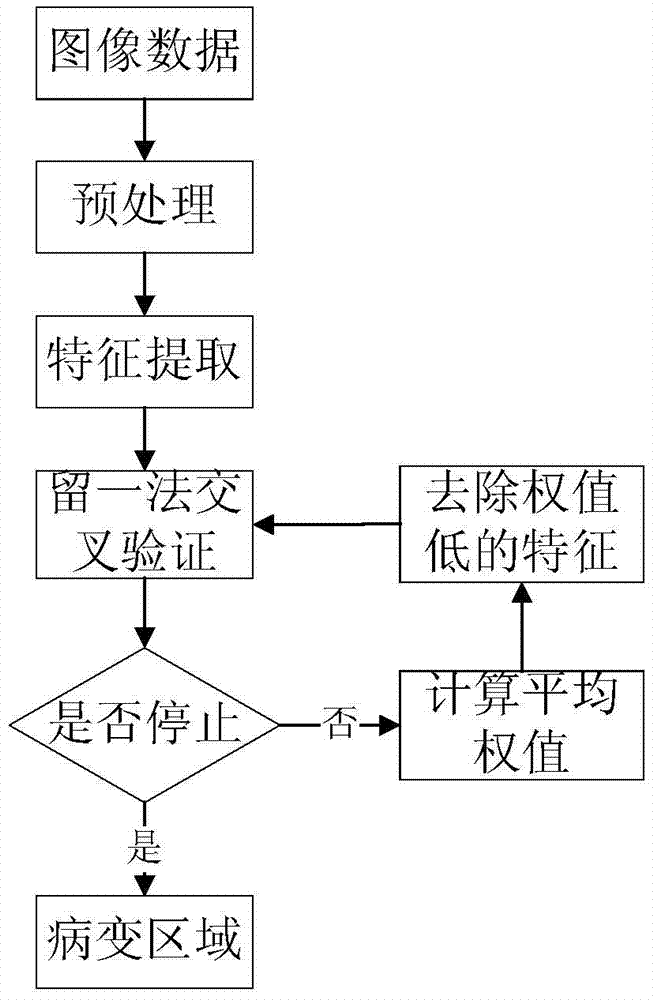A method of dti image analysis based on multivariate
An image analysis, multivariate technology, applied in the field of image analysis, which can solve the problems of not considering the influence of white matter, unable to find sub-regional lesions, unable to extract relevant variables, etc.
- Summary
- Abstract
- Description
- Claims
- Application Information
AI Technical Summary
Problems solved by technology
Method used
Image
Examples
Embodiment Construction
[0047] The present invention will be further described below in conjunction with the accompanying drawings. It should be noted that this embodiment is based on the technical solution and provides detailed implementation steps, but is not limited to this embodiment.
[0048] Such as figure 1 As shown, the multivariate-based DTI image analysis method includes: performing data preprocessing on the diffusion image data collected after the MRI scan and obtained using a diffusion weighted sequence, and the collected image data is divided into a patient group and a normal group , the patients in the patient group refer to neurodegenerative patients, and those corresponding to the patients are normal people; the ratio of the amount of the normal people group to the patient group is 1:1; then the permutation test is used to extract features , and finally use the leave-one-out method to perform cross-validation to obtain possible lesion regions. Specific steps are as follows:
[0049]...
PUM
 Login to View More
Login to View More Abstract
Description
Claims
Application Information
 Login to View More
Login to View More - R&D
- Intellectual Property
- Life Sciences
- Materials
- Tech Scout
- Unparalleled Data Quality
- Higher Quality Content
- 60% Fewer Hallucinations
Browse by: Latest US Patents, China's latest patents, Technical Efficacy Thesaurus, Application Domain, Technology Topic, Popular Technical Reports.
© 2025 PatSnap. All rights reserved.Legal|Privacy policy|Modern Slavery Act Transparency Statement|Sitemap|About US| Contact US: help@patsnap.com



